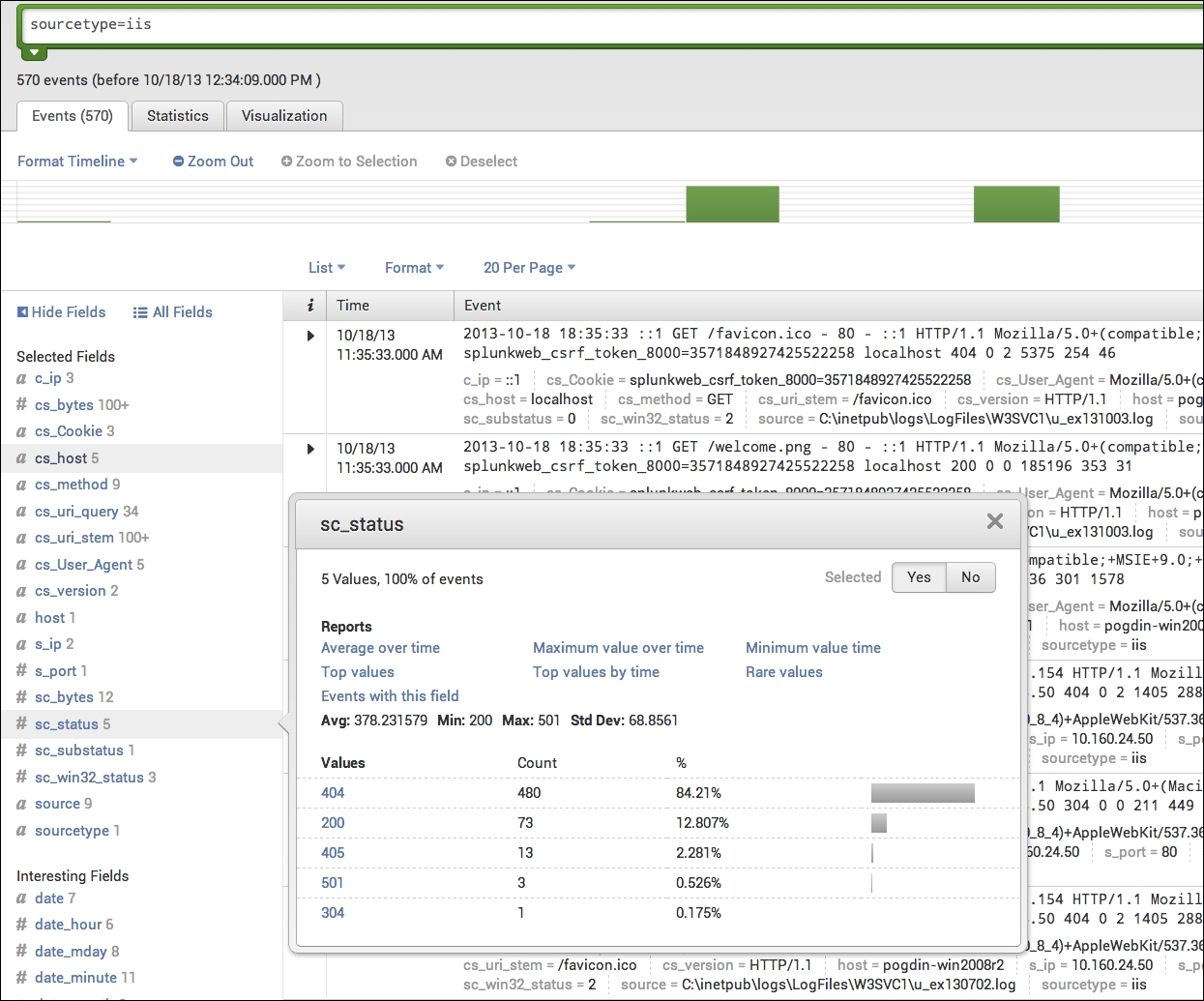
The following example returns the values for the field total for each minute. Returns the values in a field or eval expression for each minute. | timechart per_hour(eval(method="POST")) AS Views per_minute() Description The following example returns the the results of the eval expression eval(method="POST")) AS Views. The following example returns the values for the field total for each hour. Returns the values in a field or eval expression for each hour. Use the field format option to change the number formatting for the field values. Sourcetype=access_* | timechart per_day(eval(method="GET")) AS Views_day, per_hour(eval(method="GET")) AS Views_hour, per_minute(eval(method="GET")) AS Views_minute, per_day(eval(action="purchase")) AS Purchases To determine the number of Views and Purchases for each hour, minute, or second you can add the other time functions to the search. Sourcetype=access_* | timechart per_day(eval(method="GET")) AS Views_day, per_day(eval(action="purchase")) AS Purchases The results appear on the Statistics tab. This search uses the per_day() function and eval expressions to determine how many times the web pages were viewed and how many times items were purchased.
SPLUNK TSTATS EXAMPLE DOWNLOAD
Download the data set from this topic in the Search Tutorial and follow the instructions to upload it to your Splunk deployment. | timechart per_day(eval(method="GET")) AS Views Extended example This example uses the sample dataset from the Search Tutorial but should work with any format of Apache Web access log. The following example returns the results of the eval expression eval(method="GET")) AS Views. The following example returns the values for the field total for each day. You can use this function with the timechart command. Returns the values in a field or eval expression for each day. | mstats latest_time(_value) where index=_metrics metric_name=queue.* BY metric_name span=1m It is designed to return the latest UNIX time values in the past 60 minutes for metrics with names that begin with queue. The following search runs against metric data. Alternatively, you can use the rate function counter to do the same thing. If you have metrics data, you can use latest_time function in conjunction with earliest, latest, and earliest_time functions to calculate the rate of increase for a counter. Returns the UNIX time of the chronologically latest-seen occurrence of a given field value.

The search returns the event with the _time value 00:15:05, which is the event with the most recent timestamp. Sourcetype=secure invalid user "sshd" | table _time source _raw | stats latest(_raw) You extend the search using the latest function. You use the table command to see the values in the _time, source, and _raw fields. You run the following search to locate invalid user login attempts against a specific sshd (Secure Shell Daemon). Returns the chronologically latest seen occurrence of a value in a field. | mstats earliest_time(_value) where index=_metrics metric_name=deploy* BY metric_name span=1m It is designed to return the earliest UNIX time values on every minute for each metric_name that begins with deploy. Alternatively you can use the rate counter to do the same thing. If you have metrics data, you can use earliest_time function in conjunction with the earliest, latest, and latest_time functions to calculate the rate of increase for a counter. You can use this function with the mstats, stats, and tstats commands. Returns the UNIX time of the chronologically earliest-seen occurrence of a given field value. The search returns the event with the _time value 00:23:28, which is the event with the oldest timestamp.

Sourcetype=secure invalid user "sshd" | table _time source _raw | stats earliest(_raw) You extend the search using the earliest function.
SPLUNK TSTATS EXAMPLE PASSWORD
Sat 00:13:45 mailsv1 sshd: Failed password for invalid user testuser from 194.8.74.23 port 3626 ssh2 Mon 00:15:05 mailsv1 sshd: Failed password for invalid user tomcat from 67.170.226.218 port 1490 ssh2 The results appear on the Statistics tab and look something like this: Sourcetype=secure invalid user "sshd" | table _time source _raw You run the following search to locate invalid user login attempts against a sshd (Secure Shell Daemon). Use the time range All time when you run the search. To try this example on your own Splunk instance, you must download the sample data and follow the instructions to get the tutorial data into Splunk. This function processes field values as strings.īasic example This example uses the sample data from the Search Tutorial. You can use this function with the chart, mstats, stats, timechart, and tstats commands. Returns the chronologically earliest seen occurrence of a value in a field.


 0 kommentar(er)
0 kommentar(er)
